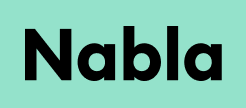⭐️ Basic Custom Instructions
Placing parameters for Custom instructions helps Nabla adhere to your instructions more consistently. For example:
Adding the word “Include” to start your instruction triggers Nabla to populate the specific information into your generated note.
Adding the words “as mentioned” or "as discussed" at the end of your instruction directs Nabla to include information related to the instruction when it is mentioned in the transcript. You could also try “as explicitly mentioned” for an added layer to let Nabla know you only want this information pulled in when explicitly mentioned by the patient or provider during the encounter.
(This helps to prevent Nabla from capturing "no information regarding...." while trying to adhere to the instruction)
General custom instructions:
Below are examples of instructions to try in the General custom instructions field:
I am a (include specific specialty), only include information regarding (specialty)
Make note more concise
Refer to patient as (insert the way you would like your patient referenced)
My name is (insert your name) → This enables Nabla to refrain from using your name to address your patient
Include maximum detail
Section custom instructions:
Below are examples of instructions to add to different sections of your template:
Include more detail regarding (insert specific information you wish to see captured) as mentioned
Include ROS organized by organ system at the end of this section
Include laterality of dominant hand and location of pain
Include a paragraph titled "Health Maintenance" and include all health maintenance information as mentioned
Start this section with patient’s name, age, gender, and reason for visit as mentioned
Adding a PE/MSE/ROS “template” instruction:
Adding your own PE/MSE/ROS exam as a custom instruction will ensure that Nabla pulls in the exam and captures the information needed to complete the exam findings (these could also be set up as Dynamic dot phrases).
Include and add information as mentioned:
PE:
Constitutional:
HEENT:
Lungs:
Heart:
Adding an ROS
Adding an ROS is as easy as entering the instruction below to the Subjective/HPI section of your chosen Nabla template:
Include ROS at the end of this section and add positive and negative symptoms as mentioned.
ROS
General:
Skin:
HEENT:
Cardiovascular:
Respiratory:
Gastrointestinal:
Genitourinary:
Musculoskeletal:
Neurological:
Alternatively, for a shorter instruction, the below could also be utilized to bring in an ROS section at the end of your Subjective/HPI section:
Include ROS organized by organ system at the end of this section
Changing Section Titles with Custom Instructions
Changing the title of a section to be something completely different than what the section is coded for, i.e. changing Subjective to Labs, will require a custom instruction directing information to this section, which is where the word “only” comes into play.
Only include information regarding (insert information to be pulled into this section) as mentioned
By including the word “only” you are enabling Nabla to overwrite the information that would typically populate this section and bring in the information instructed.
Avoiding “Section” or “Template” Terminology
Using the words “section” (in reference to creating a new section) or “template” within a custom instruction are highly discouraged as Nabla is familiar with these words in reference to the Nabla template and sections within.
An alternative instruction removing these words would be:
Include a paragraph at the end of this section titled “(insert title)” and include information regarding (insert information you wish to see captured in this paragraph) as mentioned
This will typically give the outcome of:
Title Chosen:
Information instructed to populate
This instruction helps to bring in a Past Medical History/Past Surgical History/Social History, etc. at the end of the Subjective/HPI section in Nabla templates that do not already utilize these sections, but can definitely be used throughout your Nabla template when needed.
⭐️ The use of the word "section" in reference to the Nabla section of your template in which you are adding instruction will not hinder your customizations, for example:
Include more detail in this section
Include a paragraph titled "Diet" at the end of this section
